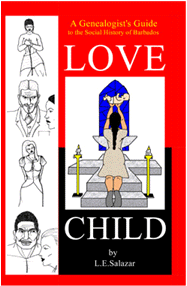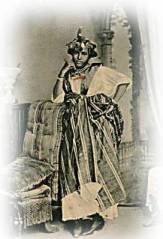Love Child

The history of slavery runs concurrently with the history of miscegenation, especially in the Caribbean where there emerged a hybrid people collectively as the free coloured people. Within that sector was a group, who came to be known individually as a love child, sometimes referred to as the High Browns, who comprised the privileged few whose European fathers, aunts or grandmothers had the economic means to release their darker kin from slavery, providing them with plantations, trade apprenticeships, commercial ties and with large endowments which could ensure judicious marriages. By the 19th century in the Caribbean many of the free coloured people became a political force although there were many who came out of slavery preferring to forget the past. Some of those who shed their association with their African and Native American ancestors migrated to other islands or to the north or southern mainland. Later, after the Emancipation of 1838 those who had been manumitted and had emigrated were joined by those who through dint of repeated miscegenation could no longer be seen as other than European. The end result of this alienation and disassociation from anyone who reminded the latter of the hardships endured have in many cases produced a legacy of denial and inordinate racial prejudice which in turn has provided a genealogical gap for their descendants.
Love Child: A Genealogist’s Guide to the Social History of Barbados first published in 2000 sought to engage research and discussion on hidden or covered aspects of the Barbadian society which in itself is a microcosm of the ancient world where miscegenation occurred, cultures met, blended and then one group got the upper hand over the other and negated the presence of the other with fables and metaphors. Hidden from view in Barbadian history was the Native American presence even though the difference in phenotype between the African-European and the Native American-African-European composition speaks for itself and despite the fact that the slave inventories of the 17th and 18th centuries carried names of persons comparable to those found in early Native American lists, of which the Comanche are a great example.
A previous book on the place of the free coloured in Barbadian society contained conclusions which were at variance with oral family history and this prompted a family history search at the Barbados Department of Archives in 1987 and the development of a 1995 University of the West Indies Caribbean Studies paper on the Free Coloured of Barbados culminating in the publication of Love Child: A Genealogist’s Guide to the Social History of Barbados.
Subsequenl to Love Child’s publication, there has emerged a new perspective of tender inter-racial relationships between some slave owners and their slaves and the acquisition of wealth by former slaves through those relationships. However, themes such as the slave hierarchy and the sizeable Native American presence have remained untouched.
Book excerpt:

Love Child: A Genealogist’s Guide to the Social History of Barbados can be purchased by mail at $15 US + shipping in N.America:
Surface mail rates apply to International destinations. Please enquire at caribbeanwriter@hotmail.com
INDEX OF SURNAMES IN LOVE CHILD
Abarbanell
Adams
Allsop
Austin
Bab
Ball
Barrow
Beckles
Belgrave
Best
Blenman
Bostock
Bowen
Brathwaite
Brookes
Burges
Bushey
Butcher
Caddle
Cantelo
Carvalho
Castello
Cavan
Clarke
Crookshanks
Culpepper
Cummins
DeRidder
Dottin
Drax
Dummett
Exley
Fairchild
Forster
Fox
Franklin
Gibbes
Gill
Golding
Gordon
Green
Hallett
Hogshard
Holdipp
Johnson
Jordan
Julien
Keeling
Longe
Lousada
Lynch
Lytcott
Mapp
Maxwell
Miller
Montefiore,
Moor
Mottley
Nunes
Prescod
Reeves
Rudder
Sealy
Stede
Steele
Sutton
Taitt
Thorne
Torres
Toyer,
Turner,
Valverde
Warde
Warner,
Willoughby
Wiltshire

Contents